July 31, 2014
Photos: Meet the Ocean Animals with the Wildest Teeth
When you’re out swimming or surfing at the beach, have you ever wondered which ocean animals surrounding you have teeth? It turns out that sharks aren’t the only marine animals with teeth—a tool in some marine animals may be more widespread than you thought.
From hundreds of sharp, razor-blade-like teeth in great white sharks to the singular long, spiraled tooth on narwhales, teeth come in all shapes in sizes in marine ecosystems. This diversity is for good reason—some use their teeth to shred and slice prey, while others use their teeth more as a harpoon.
Take a look below to learn more about teeth in your favorite ocean animals:
Bottlenose Dolphin
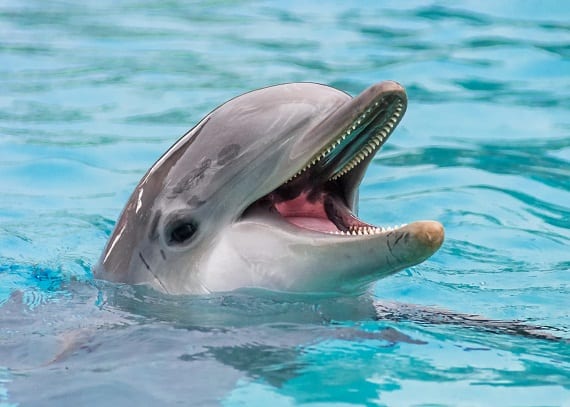
(Photo: lolilujah / Flickr Creative Commons)
Bottlenose dolphins, found in warm waters throughout the world, have 80 to 100 sharp, conical-like teeth, which are meant for grasping—and not chewing—food. They have this set of teeth for their entire lifespan, and don’t grow new teeth if one falls out.
Purple Sea Urchin

(Photo: Mr. E? / Flickr Creative Commons)
Purple sea urchins have five teeth—each less than an inch long—used to drill into rocky nooks and crevices to protect themselves from predators. Remarkably, these teeth say sharp for their entire lifespan by breaking off at weak spots.
Great White Shark
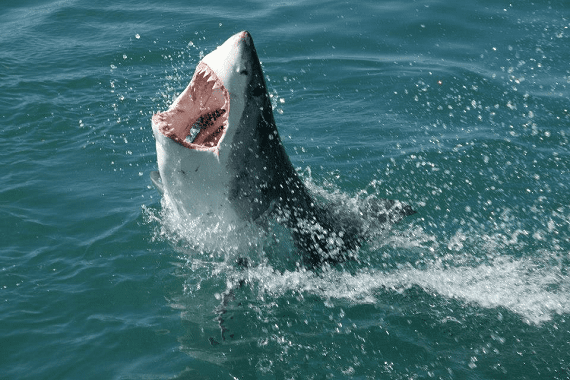
(Photo: www.travelbag.co.uk / Flickr Creative Commons)
Great white sharks are arguably most famous for their teeth—all 300 of them that come lined in seven rows. Like other shark species, great white sharks shed and regrow teeth throughout their lives.
Amazon River Dolphin
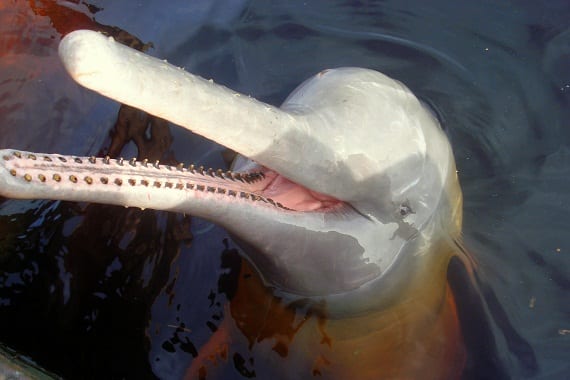
(Photo: Luciana Christante / Flickr Creative Commons)
These dolphins have 24 to 34 teeth on each side of their jaws. Their conical teeth, located at the front of their mouth, are used to grasp prey, while their molars towards the back of the mouth crush prey. This dolphin, also called boto, is found northern and central South America from the Amazon River to the Andes Mountains, according to the American Cetacean Society.
Titan Trigger Fish

(Photo: _> tom <_ / Flickr Creative Commons)
If you find yourself diving in reefs of Red Sea, Indian Ocean, and southwestern Pacific, you might notice that titan trigger fish have large front teeth that resemble human teeth. This species has several strong front teeth used to crush shellfish and crustaceans. Be sure to keep a safe distance from them—they’re known to be very protective of their nests and can bite divers that get too close.
Northern Elephant Seal
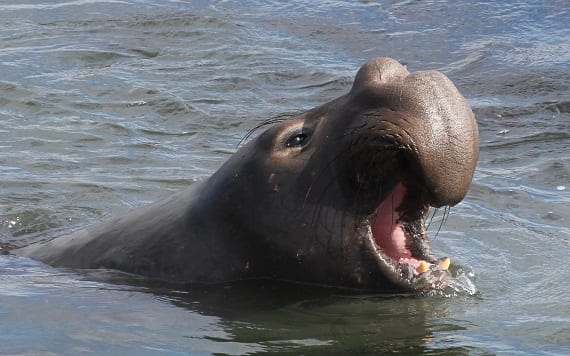
(Photo: Andrew Reding / Flickr Creative Commons)
Northern elephant seals have 30 teeth, but they’re large canine teeth are likely the most famous. The male’s four large canine teeth can grow to be nearly six inches long and are used to fight off males during breeding season.
Great Hammerhead
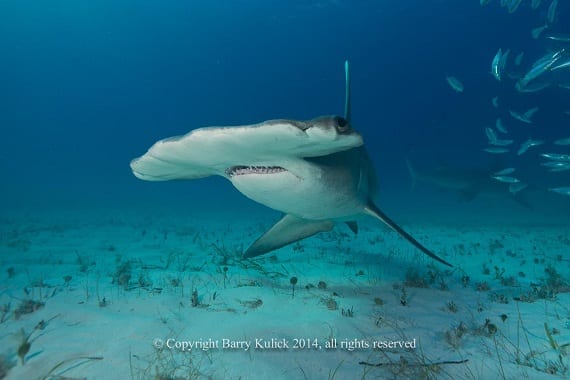
(Photo: Barry Kulick / Flickr Creative Commons)
Great hammerheads have about 20 triangular, serrated teeth on their upper and lower jaws, complemented by powerful jaws to pounce on their prey.
Fangtooth
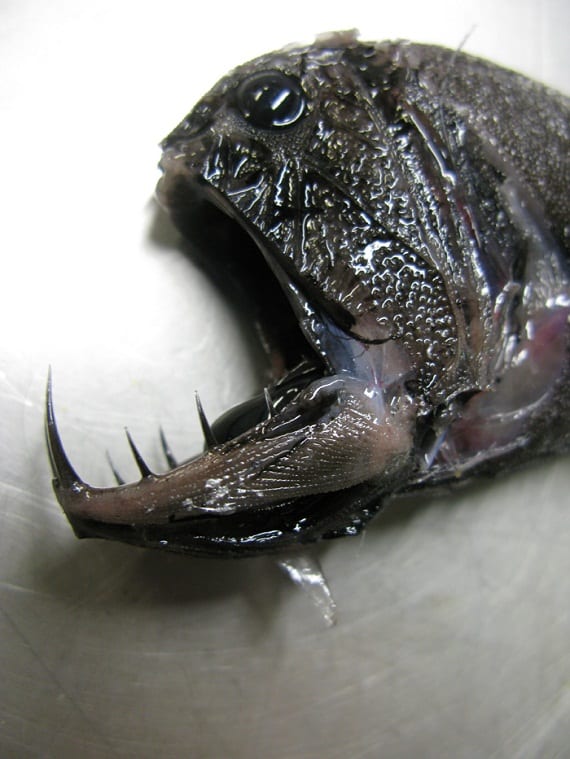
(Photo: NOAA Photo Library / Personnel of NOAA Ship PISCES)
The fangtooth, found in the deep ocean, is absolutely terrifying looking—and mostly from its sharp, elongated teeth. These fish have the largest teeth in the ocean compared to its body size, and it has evolved sockets on the side of its brain for its large bottom teeth to close in. Like several other species, the fangtooth uses its teeth to snatch prey, not chew it (it swallows it whole… eek!).
Narwhal
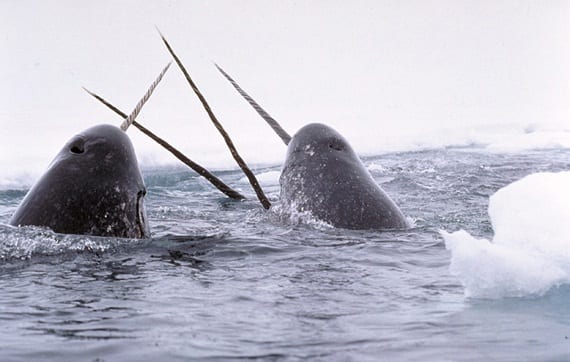
(Photo: Glenn Williams – National Institute of Standards and Technology / WikiMedia Commons)
Narwhals are famous for their tusks, which are actually large teeth. Some scientists believe that narwhales use their tusk as a sensory organ, while others believe the tusk, which is only found in males, is used to find a mate.
Sperm Whales
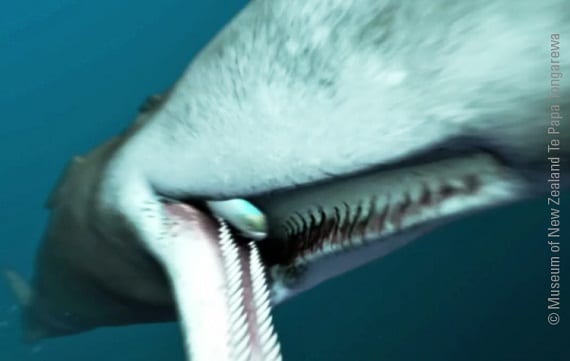
(Photo: Canadian Museum of Natural History / Flickr Creative Commons)
Sperm whales, the largest toothed whales, have 20 to 26 teeth on both the upper and lower jaws. Since sperm whale teeth don’t break through the gums until puberty, it’s assumed that they don’t play a role in feeding and may not play a specific role.



